Note: This article was originally written in 2019, and has been recently updated to reflect current events and trends. Any updated information within the article was done by our fact-checker, Fawn.
Jump To A Branch Of The Military
Deciding on which branch of the military you want to join is easy for some, and not so easy for others.
Some have their hearts set on a particular branch for a wide variety of reasons, including:
- A family member who may have served in a particular branch, like a father that served in the Air Force
- A lifelong dream to serve in one particular job in the service (like wanting to be a Navy SEAL)
- Potential careers after service
Related Article: Top 20 Reasons To Join The Military (And 7 Reasons NOT To)
For others, choosing whether you want to join the Navy, Army, Air Force, Marines, or Coast Guard, may be a difficult choice.
Unlike some other sites you may have come across, this article isn’t some military branch picker quiz that asks you useless questions like:
Do you like the beach, ocean, land, or air?
What’s your favorite color?
Etc.
Joining the military can be one of the biggest decisions of your life, and no quiz will give you the full insight you need to make an informed decision.
The purpose of this article is to help you get a better understanding of what it’s like to serve in each branch of the armed forces.
We’ll discuss what the basic training is like, some cool jobs, some un-cool jobs, what a typical day is like, and the pros and cons for each military branch.
Should I Join The Navy?
It is commonly understood that within the military that the Navy has the best base locations in the US Armed Forces. Although there are minor exceptions, every Navy base is on a coast. So, if you want to serve and the beach life calls to you, consider joining the Navy.
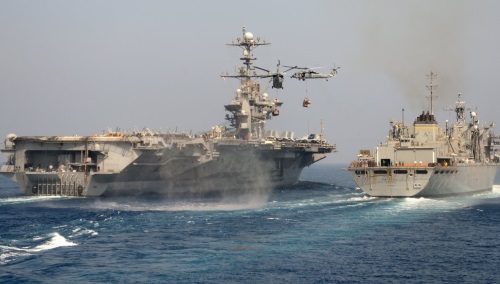
If you’re thinking about joining the Navy, one of the biggest decisions you need to make is whether or not you’ll be OK spending months at a time on a boat.
While most jobs in the Navy will require some time at sea, this isn’t true for every one. Make sure that you know what to expect before signing up if going out to sea is an issue for you.
Click Here to learn how to join the US Navy.
What’s Navy Basic Training Like?
Located at Naval Station Great Lakes, Illinois, the “Quarterdeck of the Navy” is the one and only location in the US where Navy recruits go for basic training.
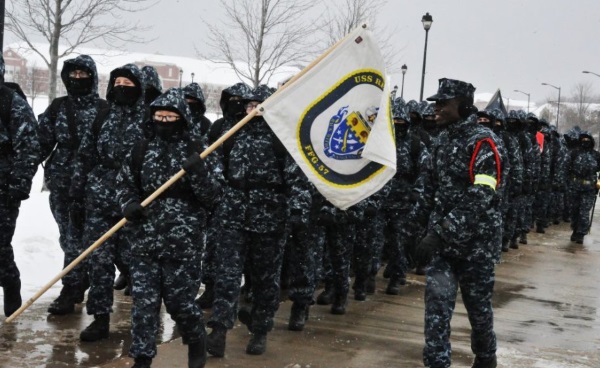
While it can still be physically difficult, it really doesn’t compare to that of the Army or Marine Corps boot camps.
Click Here to read our full article on how hard Navy Boot Camp is.
Instead of drill sergeants or drill instructors, Recruit Division Commanders are the guys who will be getting in your face when you screw up.
Throughout Navy Boot camp, you will do things like:
- Learn about Navy customs and history
- Learn about the “ship” you’re living in
- Have inspections conducted of your living quarters and work area
- Learn how to stand watch
- Learn First Aid
- Learn aircraft and ship identification
- Learn how to marlinspike
Basic training lasts 10 weeks, at the end of which you’ll be able to invite your family to your graduation.
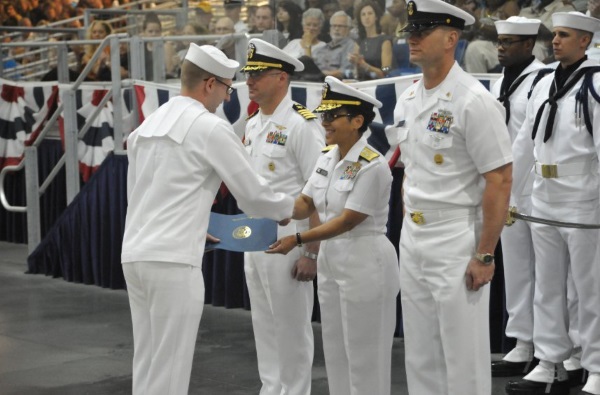
Cool Jobs In The Navy
One of the biggest decisions you’ll ever make joining the Navy is choosing your rate.
Related Article – Navy Jobs List: A List Of All 71 Ratings In The US Navy
There’s an old saying in the Navy (and the military in general) that goes like this:
Choose your rate, Choose your fate
Your rate is essentially the job you pick and is grouped into the following categories:
-
- Aviation
- Arts & Communication
- Business and Logistics
- Construction
- Electronics and Technology
- First Responder and Emergency Services
- Industrial and Mechanical
- Intelligence and Cryptology
- Legal
- Medical
- Religious Services
- Science and Engineering
- Special Operations
Within each category is a multitude of specific opportunities, also known as “ratings.”
Related Article: 10 Best Navy Jobs For Civilian Life
The Navy has some really cool, really unique ratings.
You’re probably aware of the Navy SEALs, some of the most hardened warriors the US military has to offer.
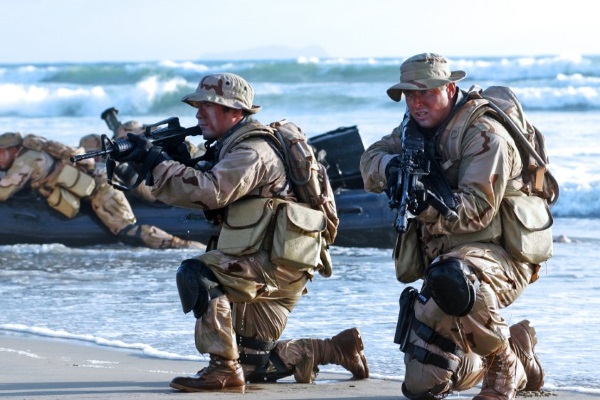
However, the training to become a SEAL (called BUD/S) is very demanding and has an attrition rate of as much as 85%.
Related Article – BUD/S Class 234: Where Are They Now?
As a result, it’s a good idea to keep your options open.
Here’s a short list of other cool jobs in the Navy that you might not have heard of:
- Navy Diver (ND)
- Hospital Corpsman (HM)
- Nuclear Field (NF)
- Intelligence Specialist (IS)
- Gunner’s Mate (GM)
- Yeoman (YN)
- Navy Security *Military Police
All of these jobs have their own unique features and benefits, too much to discuss in this article.
Speak with a Navy recruiter, and they will be able to tell you everything you need to know about each of these ratings.
Not So Cool Jobs In The Navy
Additionally, while every rating plays a part in the overall success of the Navy, here are some that sound painfully boring:
- Retail Services Specialist (RS) (duties include laundry and operating gas stations)
- Aviation Maintenance Administration (AZ) (duties include paperwork, paperwork, and—oh yeah—paperwork)
- Culinary Specialist (CS) (exactly what it sounds like, you’re a cook)
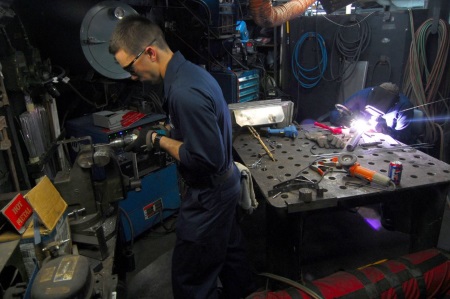
Related Article: 5 Absolutely Worst Jobs In The Navy
You should also consider the fact that life as an officer and life as an enlisted sailor can be considerably different.
What’s A Typical Day In The Navy Like?
Like all of the other branches, a typical day in the Navy will depend heavily on what your rate is and where you’re stationed.
For argument’s sake, let’s take the typical day of a popular rating in the Navy: Boatswains Mate (BM).
Assuming he or she is on a ship, a normal day could look something like this:
0600 – 0745: Wake up, shower, get dressed, eat breakfast.
0745 – 0800: Muster. You’ll gather around with your fellow sailors and discuss the day’s work ahead.
0800 – 1200: Go to work. For a BM, this can range from things like painting the outside of the ship, to standing watch on the bridge of the ship.
1200 – 1330: Eat lunch. Lunch times are considerably long, but the reason for that is that lines are often very long. For example, you could be standing in line waiting to get food stacked on your tray for 30 – 40 min.
1330 – 1700: Back to work, typically whatever you were doing that morning.
1730 – Knock-off, which is Navy slang for stop working.
1730 – 1900: Eat dinner
Throughout the day, you may also be involved in ship maintenance tasks like sweeping, cleaning, and other assorted jobs.
Pros And Cons Of The Navy
In summary, here are the pros and cons of joining the Navy. (Note: See our full list of Pros and Cons of Joining The Navy here)
Pros
- You’ll get to see the world
- Food is better than almost all the other branches
- Has some really cool jobs
- Potential for post-military careers is huge and varied
- G.I. Bill
Cons
- Most likely, you’ll have to spend months at-sea
- You’ll have almost no privacy unless you’re an officer
- Ships quarters are very small and cramped
- While there are some really cool jobs, there are an equal amount of very boring ones
- You won’t have internet access (but you may have access to email)
- Like most of the other branches, the pay isn’t very good
3 Common Reasons For Joining The Navy
- Travel to exotic locations throughout the world.
- The food in the Navy is reportedly the best out of all of the branches
- There’s no other way to put it, the Navy’s uniforms are great
Want to learn more about the Navy? Check out these articles below:
Enlisted And Officer Ranks And Pay
Grooming Standards: Hair, Mustache, and Nail Regulations
Navy PRT Standards For Males and Females
Should I Join The Army?
The Army is the oldest branch of the US Military, and as such, has quite the history.
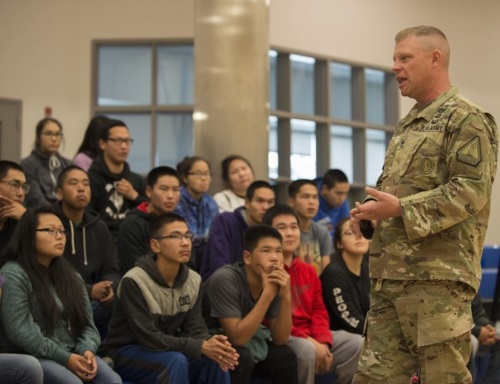
Unlike the Navy, soldiers in the US Army are strictly stationed on land military bases all over the world.
The vast majority of bases are here in the US, and they include places like:
- Fort Benning – Georgia
- Fort Hood – Texas
- Fort Campbell – Kentucky
- Fort Bragg – North Carolina
If you join the Army, there’s a good chance you will end up at one of these bases.
Click Here to learn how to join the US Army.
What’s Basic Training Like?
Army Basic training is considered one of the tougher ones in the US Military, although not quite as tough as the Marines (more on that below).
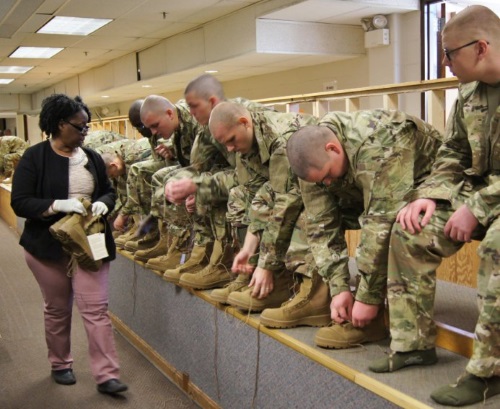
Officially known as Basic Combat Training (BCT), it’s comprised of 4 phases and lasts 10 weeks.
Click Here to find out how hard Army Basic training is.
Throughout basic, you will do things like:
- Complete physical fitness tests and training
- Learn the Army’s core values and heritage
- Learn basic rifle marksmanship
- Conduct field training exercises
- Run obstacle courses
- Conduct tactical foot marches
Oh yeah, and you’ll also go through a bit of an unpleasant experience: gas chamber training.
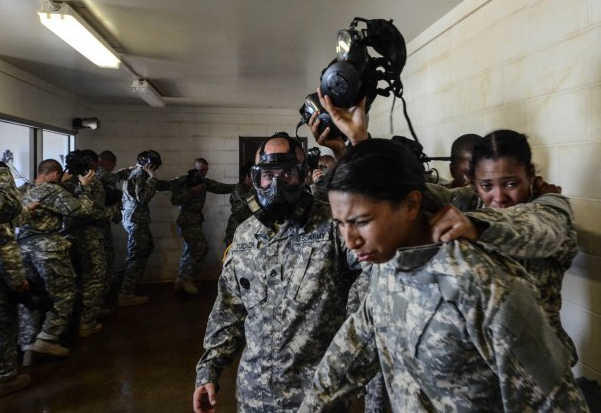
Don’t worry, though…
It’s a heavily monitored drill that nearly every soldier in the US military goes through. (except the Coast Guard)
Once you complete BCT, you will be officially designated a US Army soldier.
Related Article: Can You Join The Military With A DUI?
Cool Jobs In The Army
Just like with the Navy, jobs in the Army all boil down to one thing: what MOS you choose.
MOS stands for Military Occupation Code and is a 9-character code that is used to identify a specific job.
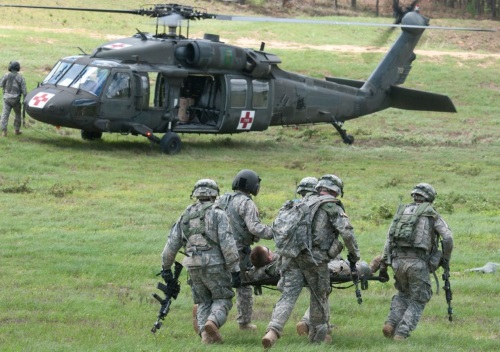
There are over 150 MOSs in the Army, and they range from everything from a carpentry specialist to an aviation mechanic.
Related Article – Army MOS List: A List Of All 159 Army Jobs
Here are a few of the more common MOSs in the US Army:
- 11B – Infantryman
- 12B – Combat Engineer
- 19K – M1 Armor Crewman
- 37F – Psychological Operations Specialist
- 15T – UH-60 Black Hawk Helicopter Mechanic
Now, it’s important to mention that choosing an MOS is one thing.
Qualifying for an MOS is a completely different one…
It will all depend on how well you score on the Armed Services Vocational Aptitude Battery, or ASVAB.
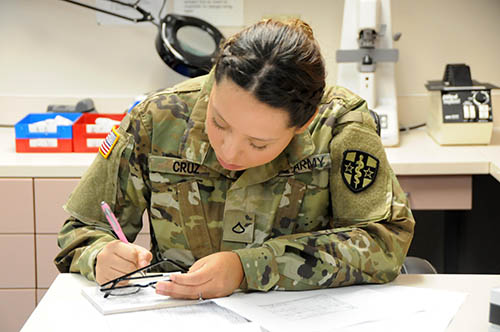
If you score high, your options could be far-ranging.
If you score rather poorly, it may significantly limit the types of Army jobs you qualify for.
If you’re thinking about joining ANY branch of the military, it is essential that you score well on the ASVAB.
Related Article: 10 Best Army Jobs For Civilian Life
Not So Cool Jobs In The Army
As I mentioned earlier, your quality of life in the Army will almost completely depend on what MOS you choose.
Picking the worst job in the Army is very difficult, mainly because it’s completely subjective and everyone has a bias.
With that said, some of the more “hated” jobs in the Army include:
- Culinary Specialist (92G)
- Joint Fire Support Specialist (13F)
- Shower/Laundry and Clothing Repair Specialist (92S)
- Plumber (12K)
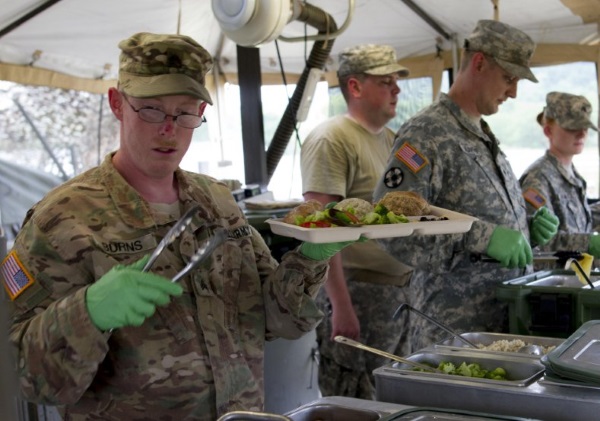
Keep in mind that, while some of these jobs aren’t the most fun, they do offer some pretty good incentives after your service is up.
For example, retiring from the Army as a chef could have you working for a 4- or 5-star restaurant making upwards of $67K a year.
The same goes for plumbers, which have an average base salary of $59k per year.
Related Article – Army Ranks and Pay
What’s A Typical Day In The US Army Like?
Like most other branches of the military, a typical day starts very early in the morning (5 am) and ends around 5 pm.
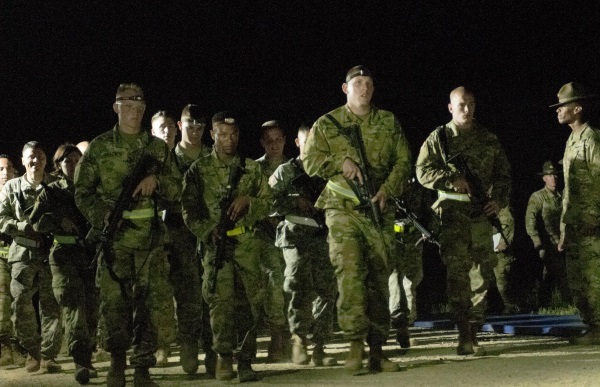
Most of the day will be spent training, marching, or otherwise performing whatever job it is you have.
For the typical infantryman (one of the most popular jobs in the Army), a typical day might look something like this:
0600 – 0630: Formation. Basically, you will line up with your platoon and prepare for physical training.
0630 – 0800: Conduct physical training. This includes things like push-ups, jumping jacks, sit-ups, running, and calisthenics.
0800 – 0900: PT ends, and you hit the showers, get in uniform, and go to breakfast.
0930 – 0945: Report for duty. This is basically where you report back in formation and receive the day’s orders.
0945 – 1130: This changes every day, depending on the needs of the unit, but essentially involves performing whatever tasks are necessary.
1130 – 1300: Chow time. You hit the dining facility for lunch.
1300 – 1630: Usually varies on a day-to-day basis, but you can expect to be training during this time.
1630: Back in formation. Review of the day’s events and a thorough review of the following day’s events are broadcast.
1645: Release. You have the rest of the day to do what you want.
Obviously, this is the most basic of what a typical day in the Army looks like, so don’t take all of this as gospel.
Pros And Cons Of Joining The Army
Click Here for our full article on the pros and cons of the US Army.
Pros
- Numerous benefits, including health care, subsidized food, housing, and education benefits.
- Decent job prospects upon retiring
- Travel to exotic locations throughout the world
- Learn new skills
Cons
- Some of the jobs can be very boring
- Like the other branches, you’ll be waking up very early
- No choice of where you’re stationed
3 Common Reasons For Wanting To Join The Army
- Adventure/travel benefits
- GI Bill
- Honor and respect of your peers
Want to learn more about the Army? Check out these articles below:
Army Reserves vs. National Guard
Should I Join The Air Force?
The Air Force is one of the most well-funded branches of the US military, and its core missions include:
- Air and Space Superiority
- Rapid Global Mobility
- Global Strike
- Global Integrated ISR
While serving in the Air Force, you’ll sometimes feel like you’re working more in a corporation than in a branch of the military.
Some even liken it to being on a college campus, with more discipline of course.

The Air Force has bases all over the world, with some of the larger ones in the US being:
- Wright-Patterson AFB – Ohio
- MacDill AFB – Florida
- Scott AFB – Illinois
- Joint Base San Antonio – Texas
- Edwards AFB – California
Depending on your job in the Air Force, you actually have the option to list which base you would like to serve at on a “dream sheet”.
Click Here to learn how to join the US Air Force.
What’s Basic Training Like?
Unlike the Army or Marines, Air Force basic training is considered way easier for a number of reasons.
For one, there’s a lot less focus on the physical fitness of candidates, and more of a focus on drills, marching, chores, and Air Force customs.
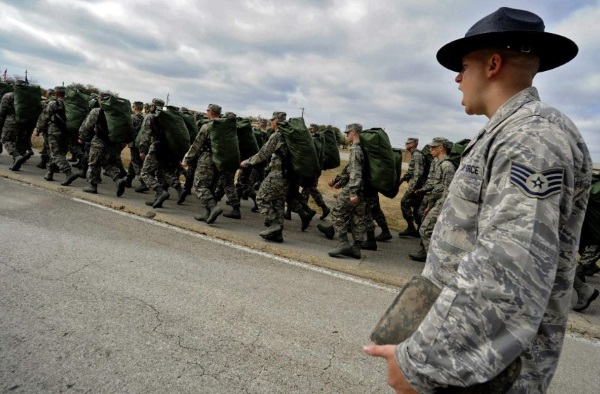
With that said, it’s no cakewalk either.
Also known as Basic Military Training (or BMT), it lasts 8.5 weeks and is conducted exclusively at Lackland Air Force Base in San Antonio, TX.
Throughout BMT, you will learn things like:
- Basic rifle firing techniques
- Chemical, Biological, Nuclear, and high-yield explosives training
- Deployment training
- Airmanship skills
Once you complete BMT, you will be officially designated a United States Airman.
Related Article: How Hard Is Air Force Basic Training?
Cool Jobs In The Air Force
The obvious first choice for everyone here is easy: pilot.
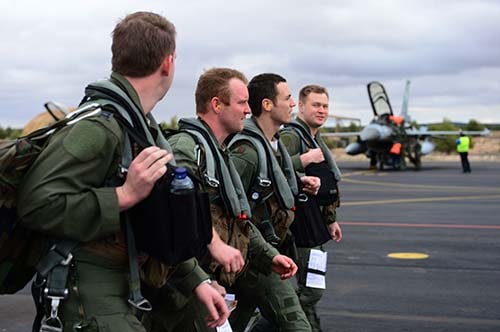
However, with only 1,100 pilot slots available every year, competition can be stiff.
You should also keep in mind that 500 – 550 of those pilot slots are reserved for Air Force Academy graduates, and 350 – 450 spots are reserved for ROTC members.
As a result, your prospects of landing a pilot slot are very low.
With that said, there are a wide variety of great jobs in the Air Force that don’t involve piercing through the sky at Mach 1.
Some of the best jobs in the Air Force include things like:
- Logistics planner
- Drone Pilot
- EOD
- Cyber Warfare
- Air Traffic Controller
Those last 2 jobs actually are some of the best-paying jobs the military has to offer, especially when you retire and move on to the civilian world.
Related Article: 10 Best Air Force Jobs For Civilian Life In 2019
If you’re 100% set on becoming a pilot, then you should consider going the Air National Guard route.
Air Force National Guard units are essentially the military reserve force, as well as the militia Air Force, of each state.
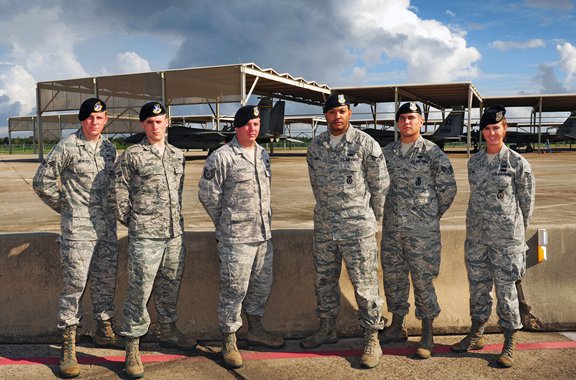
They fly all of the same aircraft that the regular full-time Air Force doesL F-22s, F-16s, F-15s, A-10s, and even large cargo planes like the C5 Galaxy.
The upside is, there’s no full-time commitment.
You still have to go to basic training, but you’ll only serve in a part-time role.
Not So Cool Jobs In The Air Force
While most others in the military consider the Air Force more of a college campus than a branch of the military, it’s not without its downsides.
While many Air Force jobs are actually considered exciting, there are several jobs that aren’t exactly considered the “most fun” or “interesting”.
Those include:
Base Security
Like sitting in a truck guarding several rows of parked fighter jets for 10 hours at a clip? Then this might not necessarily be the “worst” Air Force job for you.
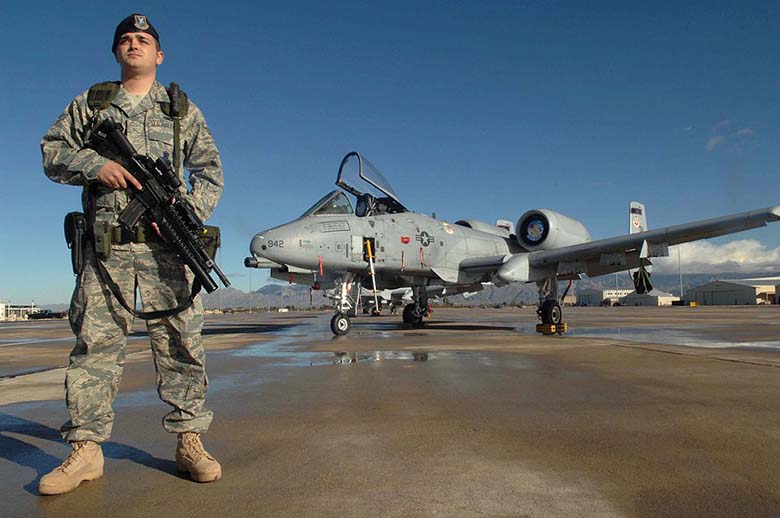
UAS Sensor Operator
Always wanted to be a pilot, but would much rather sit in an air-conditioned trailer in the middle of the Arizona desert and stare at a bunch of computer screens all day?
Then this job might be right for you.
Fuels (2F)
You’re basically a gas station attendant, except instead of filling the tank in a $45,000 car, you’re gassing up a $45,000,000 jet.
Not necessarily the worst job, but also not the most fun either.
What’s a typical day in the Air Force like?
This is actually one of the hardest branches of the military to describe the day-to-day activities of.
It’s heavily contingent upon what job you have, and where you’re based.
Related Article – Air Force Pararescue (PJ’s): Career Details
The jobs are so varied, that there isn’t really anything “typical.”
With that said, generally speaking, most jobs in the Air Force follow a very “civilian-like” regiment.
Since we’re talking about the Air Force, it would make sense to describe what a typical day might look like for one of the most important jobs: Fighter Pilot.
Here’s what it might look like:
0430 – 0600: Wake up, eat breakfast, get showered and dressed
0600 – 0830: Mission scheduling and planning. You’ll go over the flights for the week, the objectives, airspace boundaries, communications, flight routes, and much more.
0830 – 1000: Flight briefing. Here you’ll discuss the intricacies of the flight with the other pilots. Everything from the types of weapons you’ll be carrying, how they should be dropped, and tactical events will be scrutinized and meticulously gone over.
1000 – 1030: Head to life support. Here you’ll suit up for the mission, donning your G-suit, harnesses, and equipment, and preparing your helmet.
1030 – 1100: Head to the Aircraft / perform pre-flight.
1100 – 1130: Engine start, weapons armed, flight check-in, and taxi.
1130 – 1300: Sortie takes place. This will vary widely and could be anything from dog-fighting to bombing training targets on the ground.
1300 – 1330: Maintenance debrief. After landing, you’ll talk to the maintenance guys and tell them if the jet needs any repairs or issues you might have experienced during flight.
1330 – 1400: Back to life support to strip down out of your gear.
1400 – 1600: Flight debrief. Here you’ll go over everything about the flight, including reviewing tapes, doing a play-by-play review of the mission, and discussing any issues.
1600 – 1800: “Queep” time. This is the time where you complete your continuing education training, and involves things like training on the use of fire extinguishers. Seriously…while this time has been cut considerably in the last few years, it’s still very much a part of Airman duties.
As you can see, the life of a fighter pilot is nothing like the movies portray it to be.
Pros And Cons Of Joining The Air Force
Note: Click Here for our full list of the Pros and Cons of joining the US Air Force.
Pros
- Better quality of life compared to the other services
- Basic training is considered the easiest
- They have some cool jobs that translate to real-world careers
- Great housing options living on base
- GI Bill
Cons
- Requirements to get in are a bit tougher than those of the Army, Marines, or Navy
- Some of the services consider the Air Force more of a corporation than a branch of the military
- Some of the jobs require very long hours
- You might end up at a base you don’t necessarily want to be at
- You might have joined to become a pilot but end up flying unmanned drones (UAVs) instead
3 Common Reasons For Joining The Air Force
- You’re treated more like a human than the Army and Marines
- Even when you’re deployed to some foreign hotspot, you’ll likely have better housing than any other branch. (IE you won’t be “roughing it,” like they are)
- Unless you’re a pilot, you likely won’t see a minute of combat
Want to learn more about the Air Force? Check out these articles below:
Should I Join The Marines?
The US Marine Corps is actually a department of the Navy, and some (if not all) Marines like to call it “the men’s department”
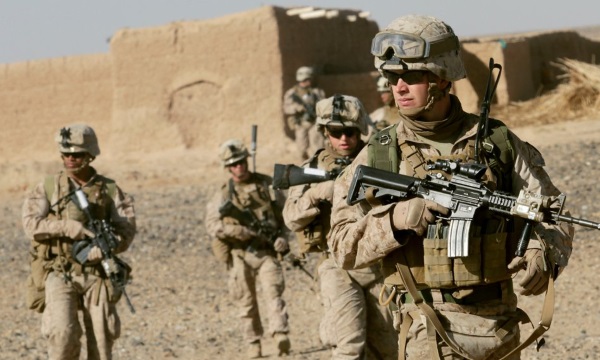
Men and Women that serve in the Marines operate both on land and on sea-going ships, and historically have been tasked with responsibilities like:
- Seizing and/or defense of Navy bases and supporting Naval campaigns
- Development of amphibious landing tactics in conjunction with the other service branches.
- Asymmetric warfare
Some guys that join the Marines have their sights set on it from a very young age, and it’s not necessarily the branch of the military that you just “join up for fun.”
Click Here to learn how to join the Marines.
What’s Basic Training Like?
Marine Corps boot camp is conducted at two locations: Parris Island, SC and San Diego, CA.
If you live east of the Mississippi you’ll go to Parris Island, and if you live west of the Mississippi you’ll go to San Diego. (colloquially known as “Hollywood Marines“)
There are no ifs, ands, or buts about it…
Marine boot camp is by far the toughest out of all of the military branches.
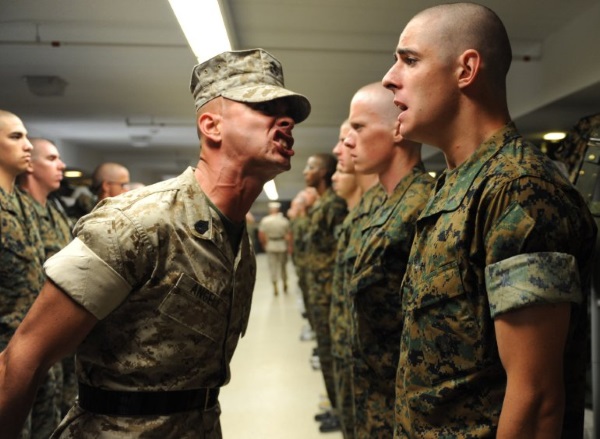
For a number of reasons, it has to be.
Marines are one of the first branches to deploy to worldwide hotspots and are often on the front lines of battle.
As a result, they need to train soldiers to be the most aggressive.
Sure, there’s lots of yelling, sometimes to the point where you feel like you might cry.
With that said, it’s all done with a purpose.
Marine Boot Camp is divided up into four phases:
Phase 1: Weeks 1 – 3
Throughout this phase, you will undergo your transition into military life. The first week is receiving week when you’re in-processed to boot cap.
The following weeks feature strenuous physical training, and close-order drill, and you’ll learn basic martial arts and the history of the Marine Corps.
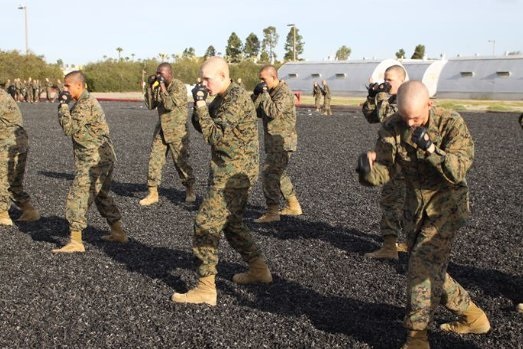
Phase 2: Weeks 4 – 6
Phase 2 includes Swim Week and Confidence Course. You’ll learn to swim if you don’t know how already. At the end of training, you’ll qualify by swimming 50 yards with a ruck.
Following Swim Week is your first physical fitness test, including a 3-mile run.
Phase 3: Weeks 7 – 10
In the third phase, recruits will start training with weapons. Grass Week means you’ll be trained on how to become an expert rifleman.
Phase 3 includes
- 8-mile hike
- Rifle training
- Gas chamber training
- The Crucible, a 54-hour field exercise
Phase 4: Weeks 11 – 13
Phase 4 includes Marine Week with martial arts qualification, rappelling, and inspections. You’ll also prepare for graduation.
- Command-level inspections
- Martial Arts tan belt qualification
- Liberty
- Family Day
- Graduation
After 14 long weeks, the recruit will finally be able to call themselves a United States Marine.
Cool Jobs In The Marines
Like the Navy, jobs in the Marines are divided up into MOSs, or military occupation codes.
Related Article – Marine Corps MOS List and ASVAB Scores: Details Of All 123 Jobs
Just like with the other branches, your job will completely depend on what your ASVAB score is.
A lot of guys that sign up for the Marines sign up for one job only: Infantryman.
This is the most common job in the Marines and puts you on the front lines of most foreign conflicts.
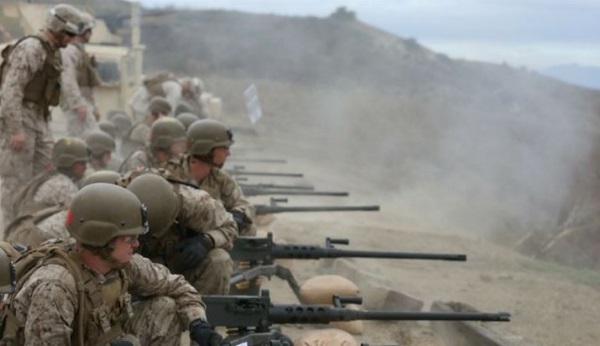
With that said, there are plenty of other job opportunities in the Marines.
Some of the more rewarding and marketable ones include:
- Cryptologic Digital Network Technician (MOS 2611)
- Dog Handler (MOS 5812)
- Machine Gunner (MOS 0331)
- Counterintelligence (MOS 0211)
As I mentioned earlier, most Marine recruits sign up for the infantry.
But it’s always a good option to keep your eyes peeled for jobs like the ones above, especially if you’re considering your options after enlistment.
Related Article: 10 Best Marine Corps Jobs For Civilian Life
Not So Cool Jobs In The Marines
Like most other branches, the Marines have their fair share of jobs that are considered “the worst.”
However, unlike the Navy, Army, or Air Force, they’re considered the “worst” for different reasons than you might think.
As I mentioned earlier, most guys join the Marines for one key reason: to see combat.
If you end up doing the following jobs, there’s a good chance you will be nowhere near the fight:
Military Police (MOS 5811)
Working as a Military Policeman (MOS 5811) in the Marines will almost certainly prepare you for a career in law enforcement after your service is up.
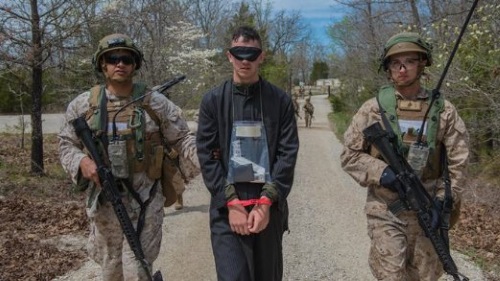
This is something you should heavily consider when deciding which branch of the military to join, as you may only be serving for a short portion of your life anyway.
With that said, it’s considered by some as the worst MOS in the Marines for a few reasons:
- As a general rule, people don’t like cops. I think it’s ridiculous, but it is what it is.
- Shifts can be very long, up to 20 hours a day in some circumstances
- It can be very stressful
Refrigeration and Air Conditioning Technician (MOS 1161)
Another job that isn’t necessarily a favorite in the Marines is Refrigeration and A/C Technician.
Again, most join the Marines to get in the fight, not fix a broken refrigerator.
Instead of doing the cool stuff like shooting off mortars or firing a 50 cal. machine gun, you’ll be squatting underneath an air handler in 95-degree heat.
Keep in mind that while both of these jobs are generally “hated” in the Marines, they can set you up for a really good career when you get out.
I can’t stress how important this is enough!
What’s A Typical Day Like In The Marines?
Depending on the job and where you’re stationed, a typical day in the life of a US Marine can vary dramatically.
Related Article: List of Marine Corps Bases In The US
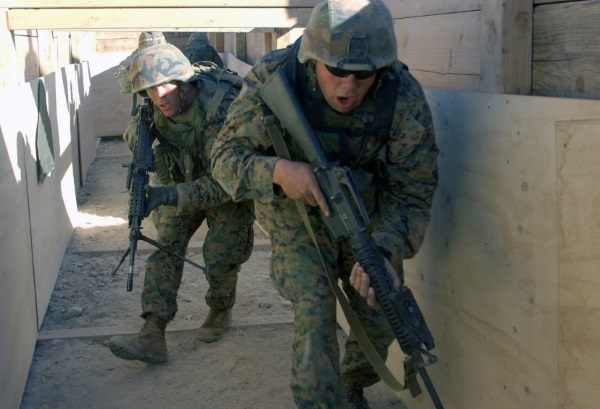
For simplicity, we’ll examine the day-to-day life of one of the most popular MOS’ in the Marines: Infantryman.
When not involved in an active war (IE peacetime), a typical day for an infantryman might look something like this:
0500: Wake up and get dressed for physical training (PT).
0515 – 0545: Team, squad, and platoon formation. This is the time that everyone essentially forms up to get ready for the morning’s events.
0545 – 0615: Company formation. All platoons in the unit will join up and report to the company commander, company 1st sergeant, and gunnery sergeant.
0615 – 0815: Physical training. This changes daily and can be everything from a 10-mile run, practicing hand-to-hand combat, and stretching and calisthenics.
0815 – 0900: Break for showers, shaving, and breakfast. As you’ll see, you don’t really have a lot of time for this.
0900 – 0930: Back in formation with your company. Throughout this time, your company commander will discuss any vital information with the company.
0930 – 0945: Break out into your individual platoons. Here the platoon commander will essentially discuss the day’s events.
0945 – 1200: Work on the day’s tasks with your squad. This could be everything from cleaning and maintaining weapons to more PT.
1200 – 1245: Break for lunch.
1245 – 1315: Back in formation with your team, squad, platoon, and company. The afternoon’s events will be discussed, along with any tasks assigned.
1315 – 1800: Back to work / PT.
1800 – 1900: Form back up with your company and be secured from the day’s events. “Secured” essentially means “We’re done working for the day, you can change out of your uniforms and into civilian clothes.”
Once a week on Thursday, the platoon will clean literally everything.
Pros and Cons of the Marines
Note: Click Here to see our full list of the Pros and Cons of Joining The Marines
In summary, here are the pros and cons of joining the Marines.
Pros
- First to fight when a war comes along
- You’ll be a part of an elite fighting force, respected by all
- They have the coolest uniforms out of all the military branches (sorry Navy, I have to agree!)
- You’ll have lifelong brothers
Cons
- Very strict standards for everything from uniform appearance to your haircut
- Not as many jobs to choose from as some of the other branches
- Slower promotions
- Lots of “hurry up and wait” type situations
- Lower quality of life than some of the other branches
3 Common Reasons For Joining The Marines
- Be a part of something bigger than yourself
- True job security. We’ll always need Marines
- Honorable history
Want to learn more about the Marines? Check out these articles below:
Should I Join The Coast Guard?
The US Coast Guard is the one branch of the military that is probably the least understood.
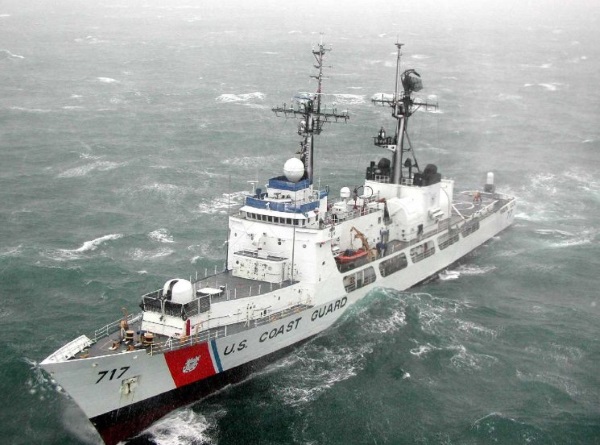
While most people don’t realize it, it actually is a branch of the US Military.
And they’re not just involved in search and rescue operations like the ones you see in movies and on TV.
Other responsibilities of the Coast Guard include:
- Drug interdiction
- Escorting civilian ships with dangerous/hazardous cargo
- Intercepting immigration trafficking vessels
- Inspect container ships for illegal cargo
- Conduct safety and security exams of US-based vessels
- Environmental protection
There are Coast Guard bases all over the US, with some of the larger ones being:
- Coast Guard Air Station Kodiak – Alaska
- Coast Guard Air Station Elizabeth City – North Carolina
- Coast Guard Air Station Clearwater – Florida
- Coast Guard Island – California
The cool thing about the Coast Guard is you can actually be guaranteed a location upon graduating.
It’s not always possible, but you certainly have a better chance of landing the base of your choice vs. the other military branches.
The Coast Guard will do everything in their power to see it that way.
Click Here to learn how to join the US Coast Guard.
What’s Coast Guard Basic Training Like?
All Coast Guard basic training is conducted at one location in the US: Cape May, New Jersey.
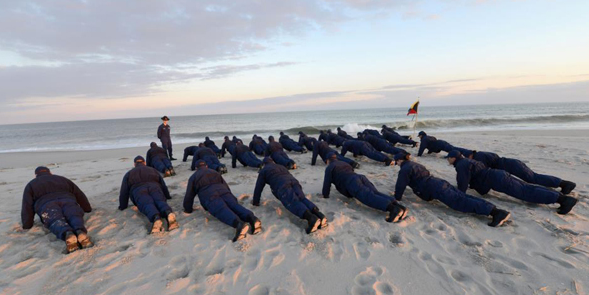
Growing up in New Jersey, I’ve been to Cape May several times.
I can tell you this, it’s not the part of New Jersey that most people think of when they think of NJ.
It’s actually a very nice part of the state, and just so happens to be a popular vacation destination.

Coast Guard basic training lasts 8 weeks, and the very first thing you’ll be tested on is your physical fitness.
Here’s a handy bullet list for what’s expected of both men and women:
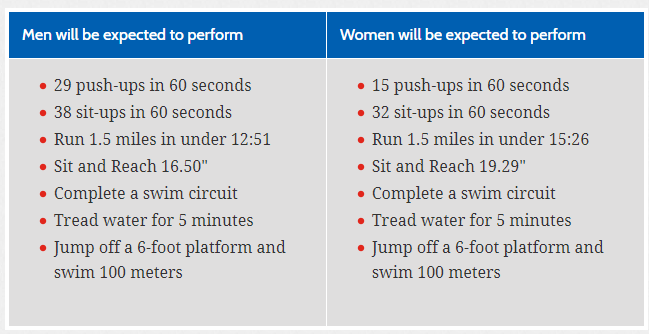
Before you even start boot camp, you’ll also have to meet the height and weight requirements, grooming standards, and tattoo policy.
While boot camp is located on the beach, it’s certainly no vacation!
Throughout boot camp, seaman recruits will do things like:
- Firefighting
- Water training, including a 100 meter swim and treading water
- Marching
- Physical training
- Marksmanship
Before you graduate from boot camp, you’ll be required to pass the PT test as well.
After boot camp, Seaman recruits will then be assigned to one of the many bases throughout the country.
Cool Jobs In The Coast Guard
As with most other branches of the military, choosing which job in the Coast Guard to pursue will be unique to every individual’s interests.
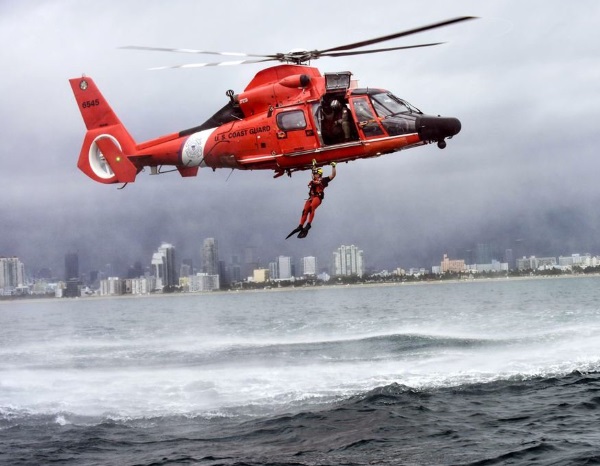
What’s interesting to note is that most of the jobs in the Coast Guard are the same ones you would find in the Navy.
Of course, there will be some major differences between jobs for enlisted personnel and jobs for officers.
With that said, some of the coolest jobs for enlistees in the Coast Guard include:
- Gunners mate
- Aviation Survival Technician (Rescue Swimmer)
- Damage Control
Related Article: 5 Best Coast Guard Jobs
Not So Cool Jobs In The Coast Guard
While leaping from helicopters in the middle of a hurricane sounds like a boatload of fun, there are a few jobs that aren’t necessarily the most popular among the ranks.
Just like with the Navy, you could be stuck doing one of these jobs:
Operations Specialist (OS)
While an operations specialist is a vital role, it’s not without its downsides.
Basically, operations specialists spend a good majority of their time standing watches.
By that I mean they will literally be sitting around in a room ‘standing watch’ for as much as 12 hours a day, two to three days a week.
You’ll basically be monitoring things to make sure there aren’t any fires or flooding, and that everything is running smoothly.
It’s a very boring job, but an important one nonetheless.
Electronics Technician
While this is sort of a wide-ranging rate, generally speaking, if you’re an ET then you are the guy that works on radios, radar systems, and computers.
You’re the guy that fixes stuff.
While some guys seem to love the job, others seem to absolutely despise it.
It really depends on where you end up.
What’s A Typical Day In The Coast Guard Like?
Just like the other branches, this depends exclusively on what rate you hold and where you’re stationed.
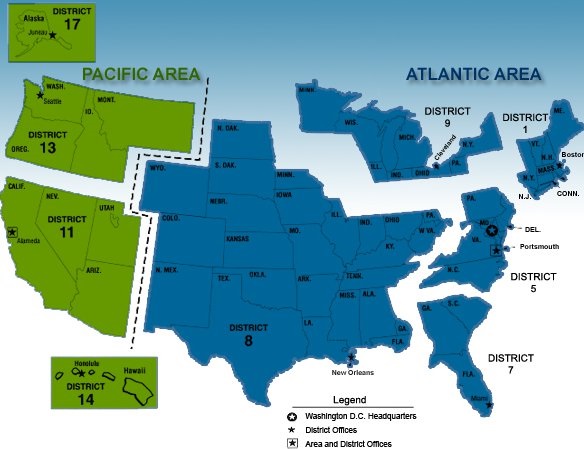
Unlike most of the other branches, however, it was nearly impossible to find out what the typical day in the Coast Guard would be like.
It varies so dramatically that I’ve decided to leave it out in this article.
If anyone who has served in the US Coast Guard wants to send me an email with a brief recap of their day-to-day activities, it would be greatly appreciated!
Pros And Cons Of Joining The Coast Guard
Now that you have a better understanding of what they do, what basic training is like, and cool/uncool jobs, it’s time to sum it up.
In summary, here are the pros and cons of the Coast Guard (click here for the full list):
Pros
- You (*probably) won’t be deployed to a foreign war
- Much smaller branch, so you will form personal relationships with men and women of all ranks
- Really cool bases, all located on or near a beach
- Possible to get your choice of base guaranteed
- Deployments are usually shorter than other branches (around 4 months)
Cons
- Getting into the CG can actually be difficult due to the small number of recruits needed to fulfill the mission
- Some jobs are very dangerous
- Cutters are very small, and as such, living quarters are kind of cramped
*While the Coast Guard typically isn’t sent to combat zones, it’s still possible depending on the overall mission and circumstances.
3 Common Reasons For Joining The Coast Guard
- Always stationed by a beach, sometimes in very nice resort areas.
- Travel. You’ll get to see unique parts of the county you likely have never been before.
- Save lives. This is probably one of the biggest reasons people join the Coast Guard. Not only will you be saving lives, but you’ll be getting paid too!
Frequently Asked Questions
What is the best branch of the military to join?
According to reviews on the website Glassdoor, the best branch of the military is the Marine Corps. Learn more about the benefits of joining the Marine Corps here.
Which branch of the military pays the most?
All members of the military, regardless of branch, are paid the same. Pay is dictated by the length of time in service, as well as your rank. With that said, there are ways to maximize the financial benefits of joining the military. Find out how here.
Which branch of the military has the EASIEST boot camp?
While boot camp in each branch is uniquely challenging, the Air Force is widely considered to have the easiest basic training. Learn more about Air Force Boot Camp (BMT) here.
Which branch of the military has the HARDEST boot camp?
In various surveys and discussion groups, it’s well-known that the Marine Corps has the hardest basic training of all 5 branches of the military. Find out how to prepare for Marine Corps boot camp here.
Which branch of the military has the most women?
Females make up around 203,000 of the US military, 74,000 of which serve in the US Army. Learn more about the US Army here.
Conclusion
There are a ton of factors you should be thinking about if you’re deciding to join the military, the most important being:
- Your individual personality. You should be able to figure out if a job suits you based on your own unique interests.
- Career opportunities after service. Think big picture here. If you’re simply a rifleman in the Army, you may be severely limiting your career choices after your service is up.
- Officer or enlisted route. There are huge differences, both in terms of quality of life and advancement, when deciding to go the officer or enlisted route. Act accordingly.
Your best bet is to visit a local recruiter for each branch of the military and talk to them in depth about the various career opportunities.
Hopefully, this article informed you enough to make the right decision on which branch of the military you should join!
- Green Berets Vs. Rangers: 5 Major Differences - June 17, 2024
- Tattoo Policy For Each Branch Of The Military In 2023 - June 17, 2024
- Top 20 Reasons To Join The Military (and 7 Reasons NOT To) - June 17, 2024

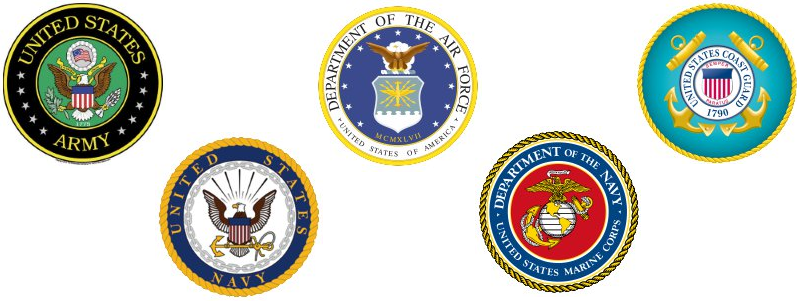


Rob, this should be required reading for any person who is even thinking about going into the military. I am a military wife and mother and I never know so much as I do now about the different branches. I’m trying to prepare my grandson to see what he wants to do and this info is invaluable.
Glad to help Linda!
Rob